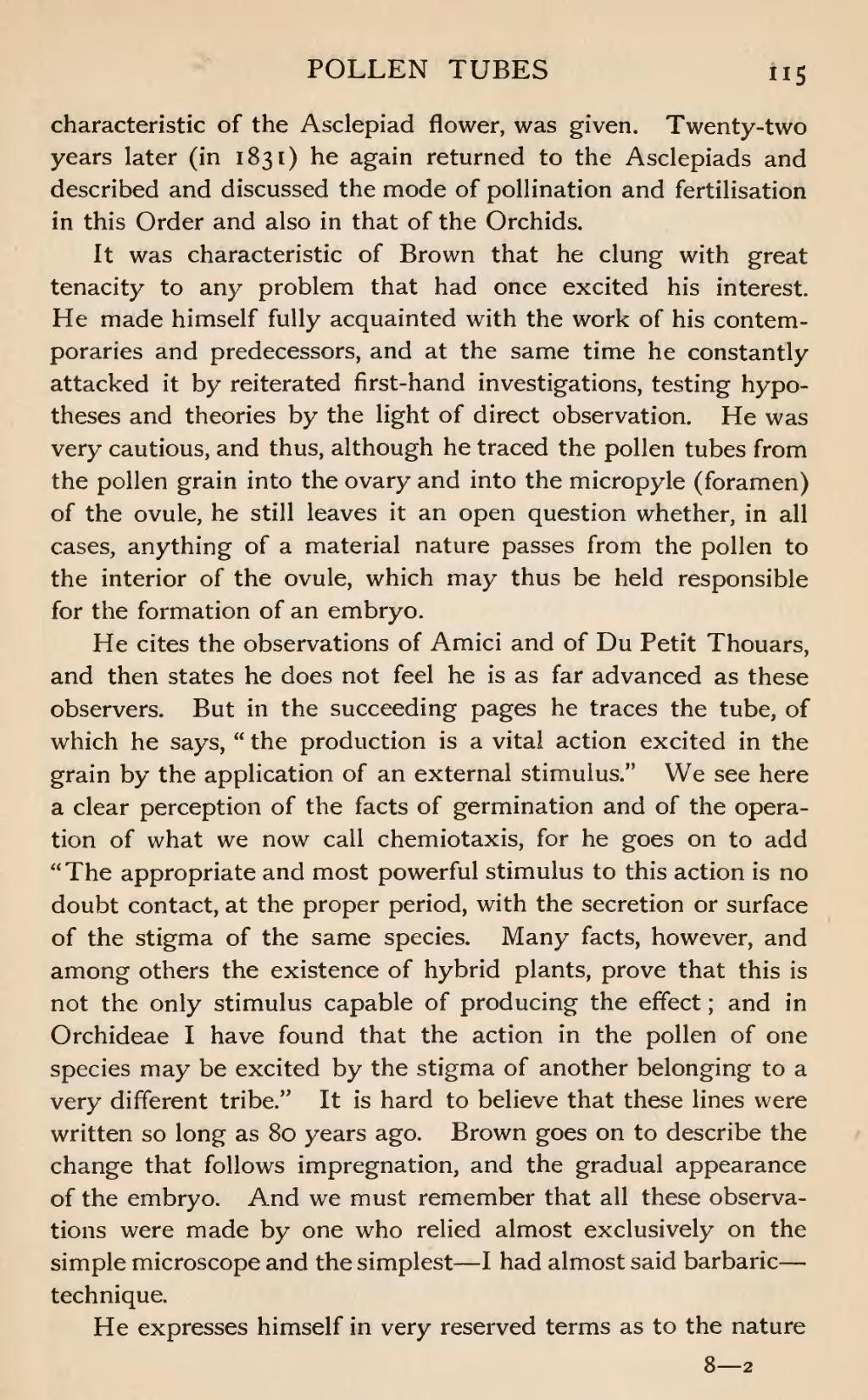characteristic of the Asclepiad flower, was given. Twenty-two years later (in 1831) he again returned to the Asclepiads and described and discussed the mode of pollination and fertilisation in this Order and also in that of the Orchids.
It was characteristic of Brown that he clung with great tenacity to any problem that had once excited his interest. He made himself fully acquainted with the work of his contemporaries and predecessors, and at the same time he constantly attacked it by reiterated first-hand investigations, testing hypotheses and theories by the light of direct observation. He was very cautious, and thus, although he traced the pollen tubes from the pollen grain into the ovary and into the micropyle (foramen) of the ovule, he still leaves it an open question whether, in all cases, anything of a material nature passes from the pollen to the interior of the ovule, which may thus be held responsible for the formation of an embryo.
He cites the observations of Amici and of Du Petit Thouars, and then states he does not feel he is as far advanced as these observers. But in the succeeding pages he traces the tube, of which he says, "the production is a vital action excited in the grain by the application of an external stimulus." We see here a clear perception of the facts of germination and of the operation of what we now call chemiotaxis, for he goes on to add "The appropriate and most powerful stimulus to this action is no doubt contact, at the proper period, with the secretion or surface of the stigma of the same species. Many facts, however, and among others the existence of hybrid plants, prove that this is not the only stimulus capable of producing the effect; and in Orchideae I have found that the action in the pollen of one species may be excited by the stigma of another belonging to a very different tribe." It is hard to believe that these lines were written so long as 80 years ago. Brown goes on to describe the change that follows impregnation, and the gradual appearance of the embryo. And we must remember that all these observations were made by one who relied almost exclusively on the simple microscope and the simplest—I had almost said barbaric—technique.
He expresses himself in very reserved terms as to the nature
